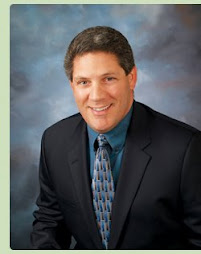Recently, I attended a program focused on referrals. The question was asked “How many referral sources are enough? As I pondered this, I was quite intrigued at what I discovered. Interestingly for me once again, it came down to focus. Chet Holmes of The Ultimate Sales Machine™ says should you do 10 things 14,000 times. When identifying the number of referral sources you need its really no different.
So how many referral sources do you need? Consider, if you would, a single meeting with a potential referral source is approximately 1.5 hours. Assume further, you were committed to three meetings per week to meet with new referral sources. That would take only 4.5 hours of your entire work week, about 10% of your time. The question is, “Is it effective?” If you stay committed to three referral source meetings per week, that will permit you to meet with 12 people per month; totaling about 144 people per year. Give or take a few. Seriously. If each of these 144 people referred you one or two cases, you will have between 144 and 288 cases per year, probably far beyond what you could handle or need to meet your firm monthly revenue goal. So, is it necessary to meet with various referral sources three times a week? Absolutely; but only if you are more than intentional about it.
However, what if I said you were limited to only ten referral sources? Which ten would you pick? And knowing that you only had ten to chose from, what would be the criteria to identify whether a potential referral source made it to your top ten? These are the questions you want to ask yourself to be able run an efficient profitable practice because as we know, if there are no referrals, there is no business. And busy without business means loss, financial loss.
What I recommend is you pick your top ten referral sources and meet with them and identify what it is about them that made them your top referral source. Is it their personality? Is it their clientele? Is it the values you share in common? I suggest you indentify the qualities of your top ten; then your top two or three and absolute clone them. What if, instead of meeting 144 people a year, you focused on the ten you had the best relationships with and asked them to introduce you to people like them? What if, each one of them you asked to introduce you to just three more people? What if, instead of meeting 12 new people per month, you commit to meeting four people, the same four people, and once each quarter? And you continue to build your relationship and continue to work together in the ways that serve both of you best. This creates several efficiencies. First, you have to manage fewer relationships. While your top ten will introduce you to 30 others, most of those ones referred to could be managed through that one relationship. Continuing on, if one of the referrals from your top ten becomes a new top ten, then you can request three from them. Now you are beginning to build a network of networks rather than starting fresh over and over again.
Interestingly, as I look at my calendar and see the little time I have to market, I have a conundrum to determine how can I not market, otherwise, I’ll have no work to do. Working smarter, not harder is always the answer. It is working with efficiency. So, I challenge each of you to uncover who your top ten referral sources are. Will you meet with just anyone? A standard you have to determine right off the bat. Another standard I would identify is if somebody’s calling you as opposed to you calling them. Pay attention; possibly they’re identifying you as their top ten and they should get priority or at least a free look at you to determine if there’s a possibility for them to fall into your top ten. It doesn’t take much. It just takes focus, intentionally and authenticity. It’s not hard folks and you may actually find yourself having fun and oh yeah; increased clients, increased referrals and increased cash flow.


